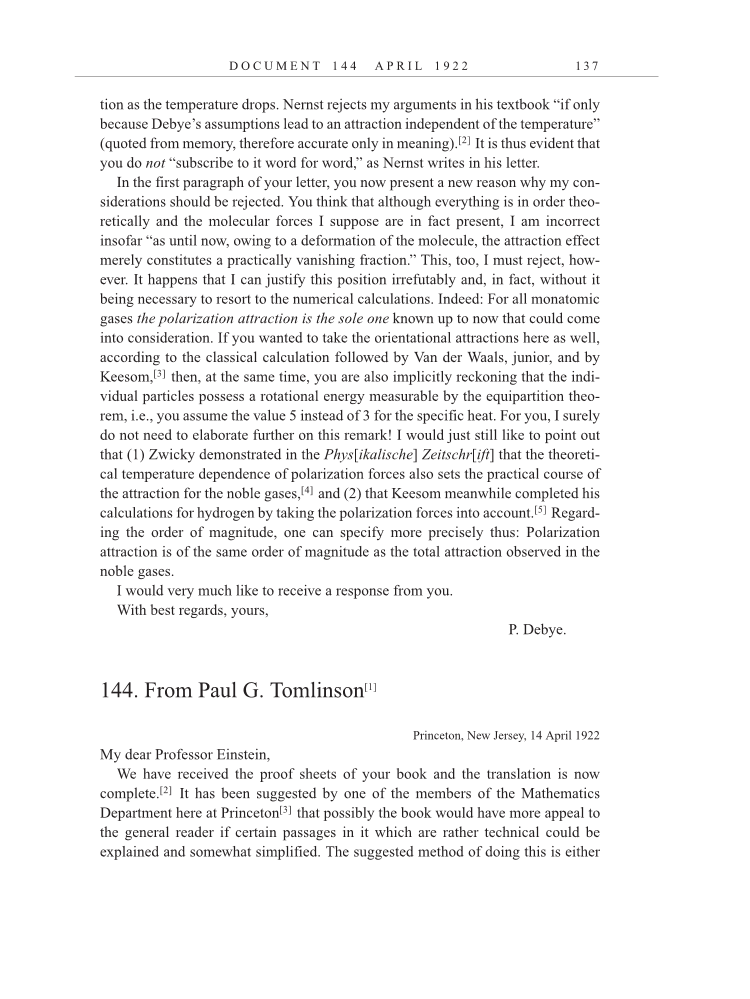D O C U M E N T 1 4 4 A P R I L 1 9 2 2 1 3 7 tion as the temperature drops. Nernst rejects my arguments in his textbook “if only because Debye’s assumptions lead to an attraction independent of the temperature” (quoted from memory, therefore accurate only in meaning).[2] It is thus evident that you do not “subscribe to it word for word,” as Nernst writes in his letter. In the first paragraph of your letter, you now present a new reason why my con- siderations should be rejected. You think that although everything is in order theo- retically and the molecular forces I suppose are in fact present, I am incorrect insofar “as until now, owing to a deformation of the molecule, the attraction effect merely constitutes a practically vanishing fraction.” This, too, I must reject, how- ever. It happens that I can justify this position irrefutably and, in fact, without it being necessary to resort to the numerical calculations. Indeed: For all monatomic gases the polarization attraction is the sole one known up to now that could come into consideration. If you wanted to take the orientational attractions here as well, according to the classical calculation followed by Van der Waals, junior, and by Keesom,[3] then, at the same time, you are also implicitly reckoning that the indi- vidual particles possess a rotational energy measurable by the equipartition theo- rem, i.e., you assume the value 5 instead of 3 for the specific heat. For you, I surely do not need to elaborate further on this remark! I would just still like to point out that (1) Zwicky demonstrated in the Phys[ikalische] Zeitschr[ift] that the theoreti- cal temperature dependence of polarization forces also sets the practical course of the attraction for the noble gases,[4] and (2) that Keesom meanwhile completed his calculations for hydrogen by taking the polarization forces into account.[5] Regard- ing the order of magnitude, one can specify more precisely thus: Polarization attraction is of the same order of magnitude as the total attraction observed in the noble gases. I would very much like to receive a response from you. With best regards, yours, P. Debye. 144. From Paul G. Tomlinson[1] Princeton, New Jersey, 14 April 1922 My dear Professor Einstein, We have received the proof sheets of your book and the translation is now complete.[2] It has been suggested by one of the members of the Mathematics Department here at Princeton[3] that possibly the book would have more appeal to the general reader if certain passages in it which are rather technical could be explained and somewhat simplified. The suggested method of doing this is either
